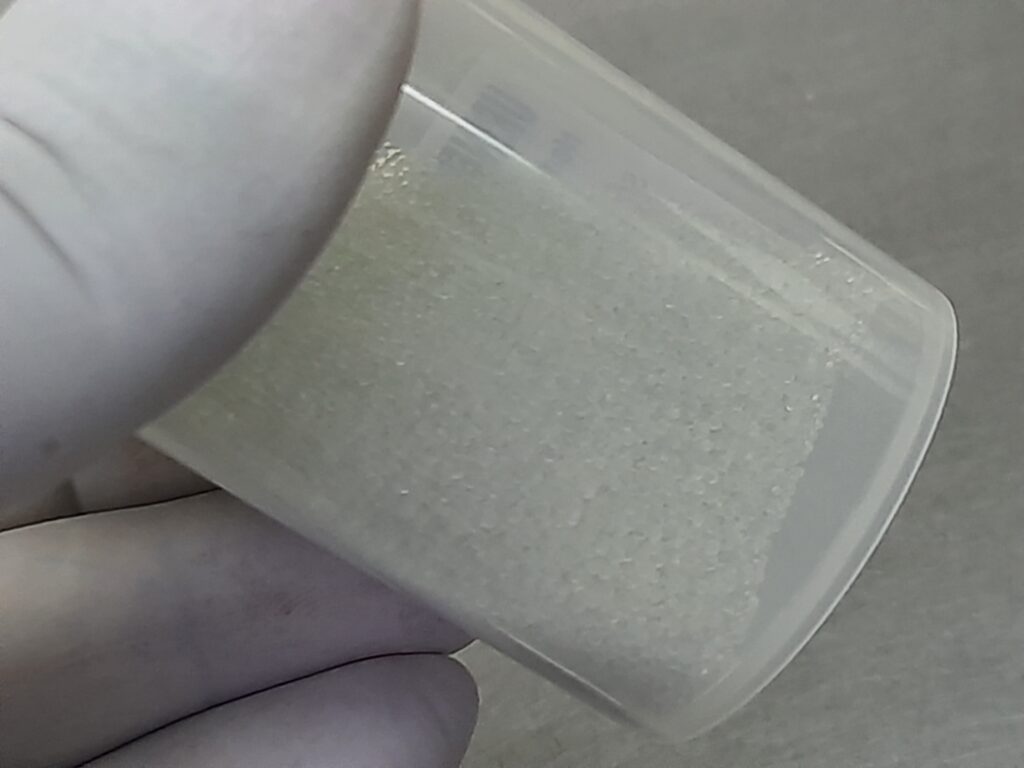Glass Beads- Introduction, Principle, Test Requirements, Working Mechanism, Application, and Keynotes

Introduction
Glass beads are small, inert, spherical particles widely used in microbiology, molecular biology, and cell culture. Their smooth, durable surface and chemical stability make them suitable for disrupting tissues, homogenizing cells, and aiding in sterilization or agitation processes.
Principle
The principle of using glass beads is based on mechanical disruption and surface interaction. When combined with shaking, vortexing, or agitation, the beads collide with biological samples, breaking open cells or dispersing microbial clumps, thereby facilitating downstream applications such as DNA/RNA extraction, microbial culture, or sterilization.
Test Requirements
Materials Needed
- Glass beads (sterile, pre-cleaned, varying diameters 0.1–6 mm depending on purpose).
- Culture medium, tissue, or cell suspension.
- Vortex mixer, bead-beater, or flask for agitation.
- Sterilization-Beads should be sterilized by autoclaving or dry heat before use.
- Sample Preparation-Select bead size depending on sample type (e.g., smaller beads for bacteria, larger for fungi or tissues).
Working Mechanism
Cell Disruption: Beads break microbial cell walls or tissue matrices by high-speed collisions.
Agitation: Beads facilitate uniform mixing in liquid cultures.
Surface Area: Their inert glass surface enhances aeration and prevents clumping.
Sterilization: Hot glass beads are used in bead sterilizers to rapidly sterilize small instruments like inoculating loops.
Applications
Microbiology
Sterilization of inoculation loops using glass bead sterilizers.
Mixing of microbial cultures to avoid clumping (especially mycobacteria).
Molecular Biology
DNA and RNA extraction from bacteria, fungi, and tissues via bead beating.
Protein extraction through cell lysis.
Cell Culture
Homogenization of cell suspensions.
Other Uses
Calibration in microscopy and particle analysis.
Keynotes
- Glass beads are inert, reusable, and cost-effective.
- Bead size and agitation speed directly influence the efficiency of lysis or mixing.
- Avoid over-agitation as it may cause DNA shearing or protein degradation.
- Sterilization of glass beads ensures aseptic conditions in microbiological work.
Further Readings
- https://medcart.com.au/blog/what-are-glass-beads-and-what-are-they-used-for/?srsltid=AfmBOoq1KrbDq3EuAoEjSuU_qmP5EDYLgtdelPqdJf6aiyDd0IAR0wHP
- https://www.thomassci.com/laboratory-supplies/glass/glass-beads?srsltid=AfmBOopMA54GTdYS769qpfmfvHzqoNxHmf271r7fETTSI2hRMHyg-KFO
- https://www.labcomercial.com/en/separation/1361-5mm-solid-glass-beads-of-laboratory.html
- https://www.himedialabs.com/in/grm7682-glass-beads-undrilled.html
- https://www.scienceequip.com.au/products/borosilicate-glass-beads?srsltid=AfmBOorFr-dmJE9ZgE-CvYafWof2vRMzmvODfZ8xpv00GnKtdt6kh8eG
- https://unicat.msf.org/cat/product/13026
- https://www.annclinlabsci.org/content/39/1/51.full
- https://www.carolina.com/biotechnology-lab-supplies/glass-beads/215821.pr?srsltid=AfmBOorniElMsEiMOqr0Cwd7vtzFd9gAhgYORA_2CbptuDbVpg1mZwxt
- https://www.nextadvance.com/homogenizer-supplies/glass-beads/
- https://labbox.eu/product/glass-beads/
